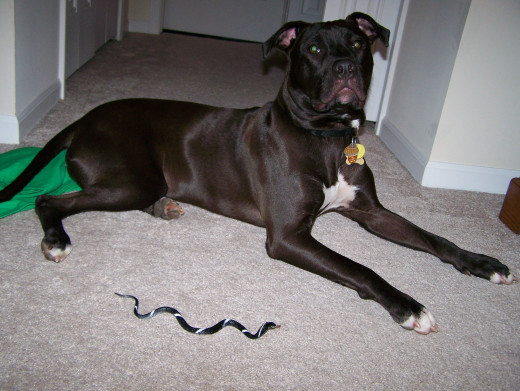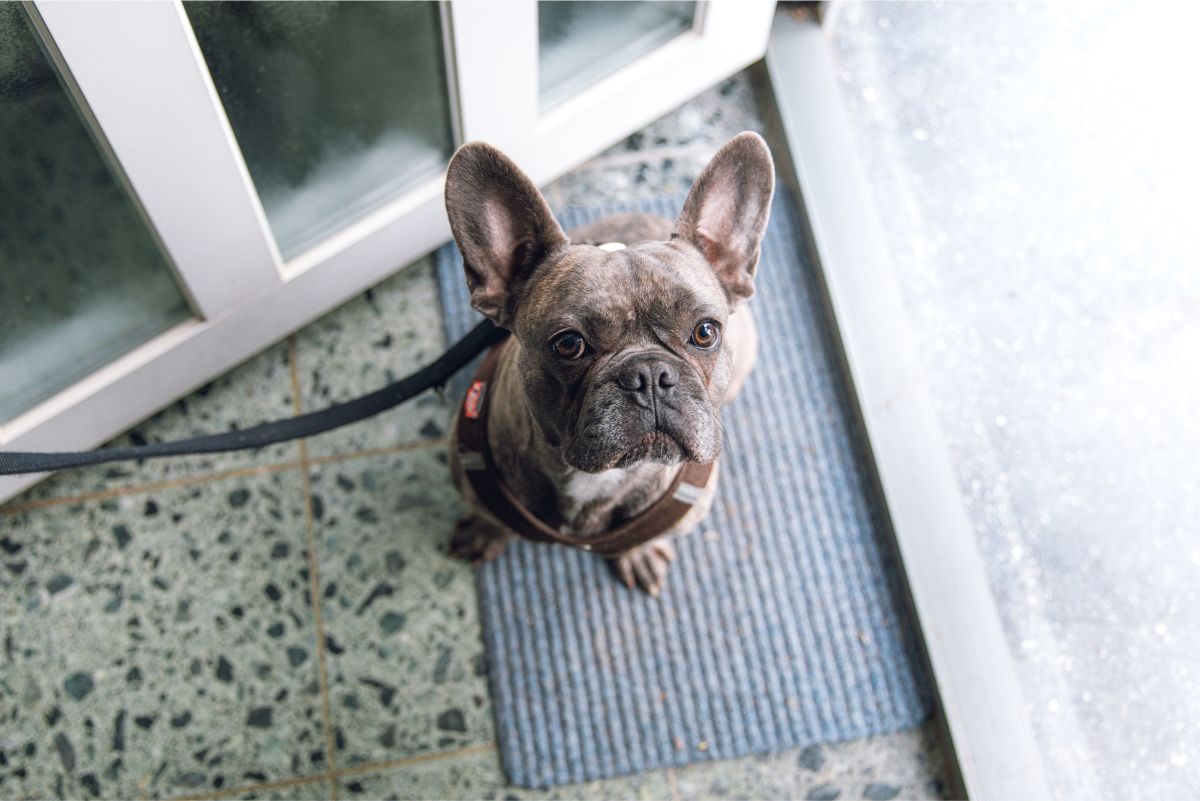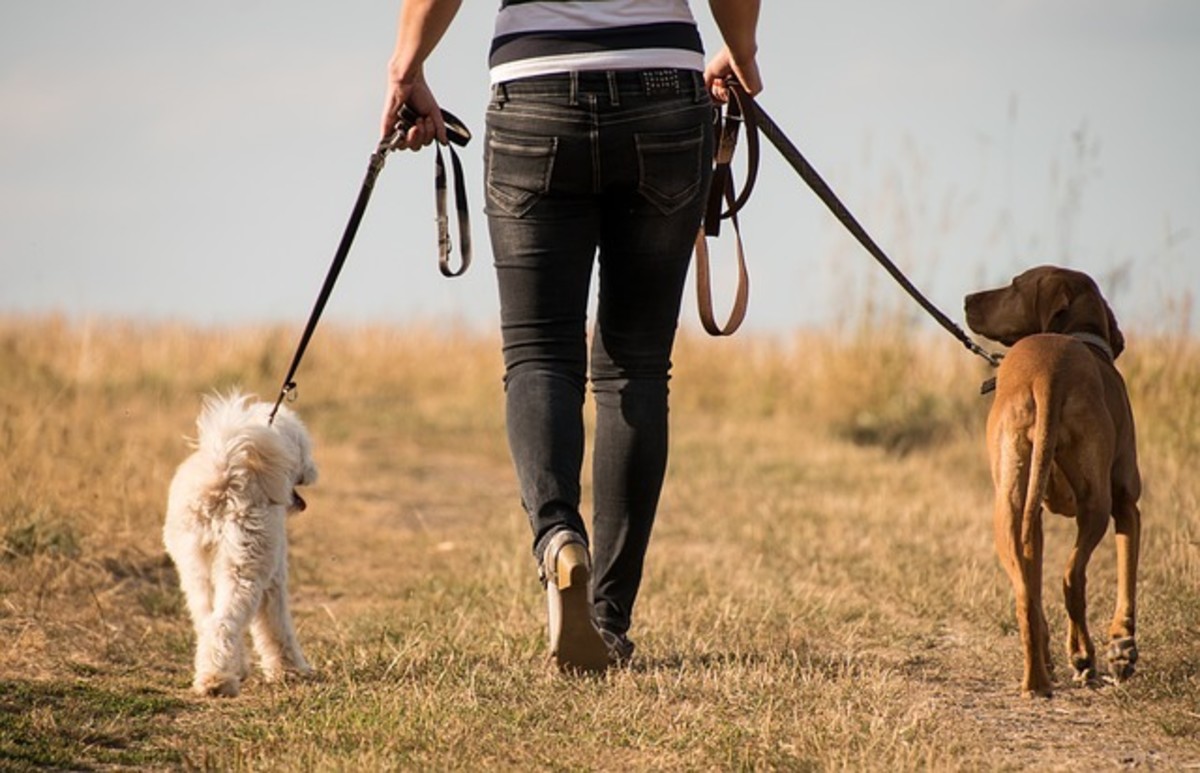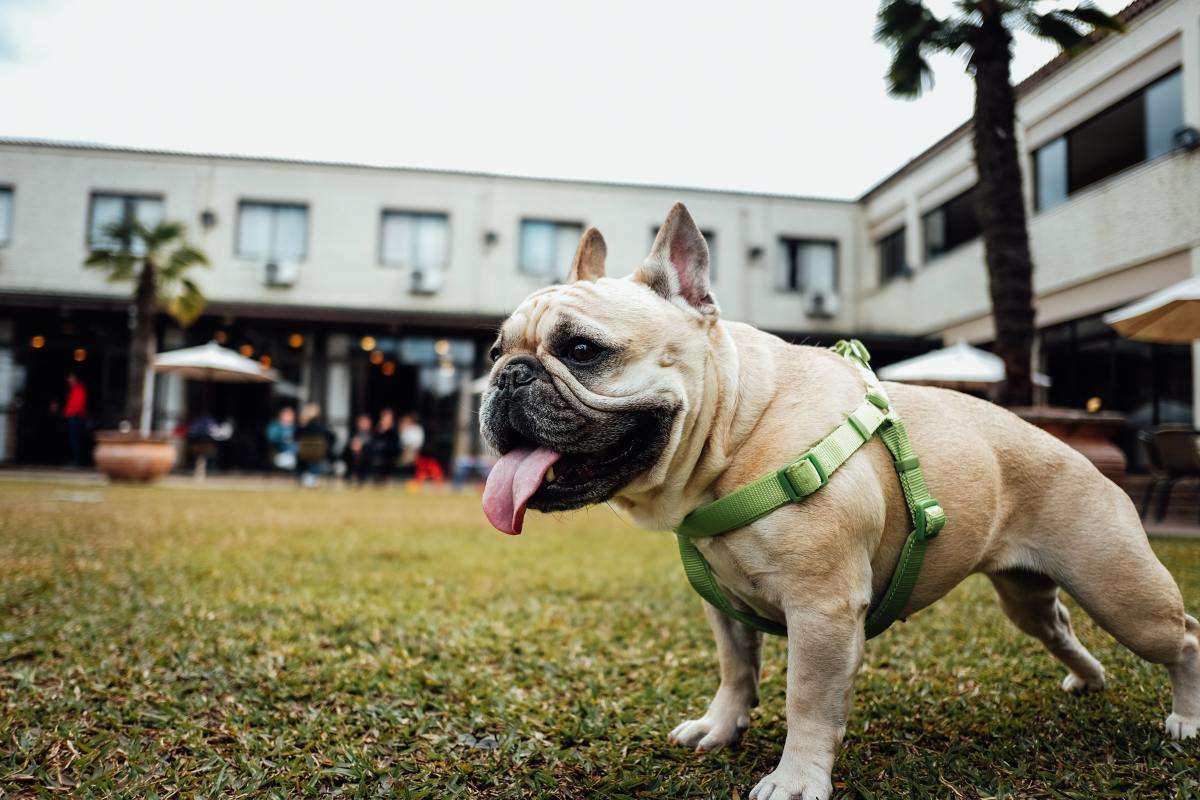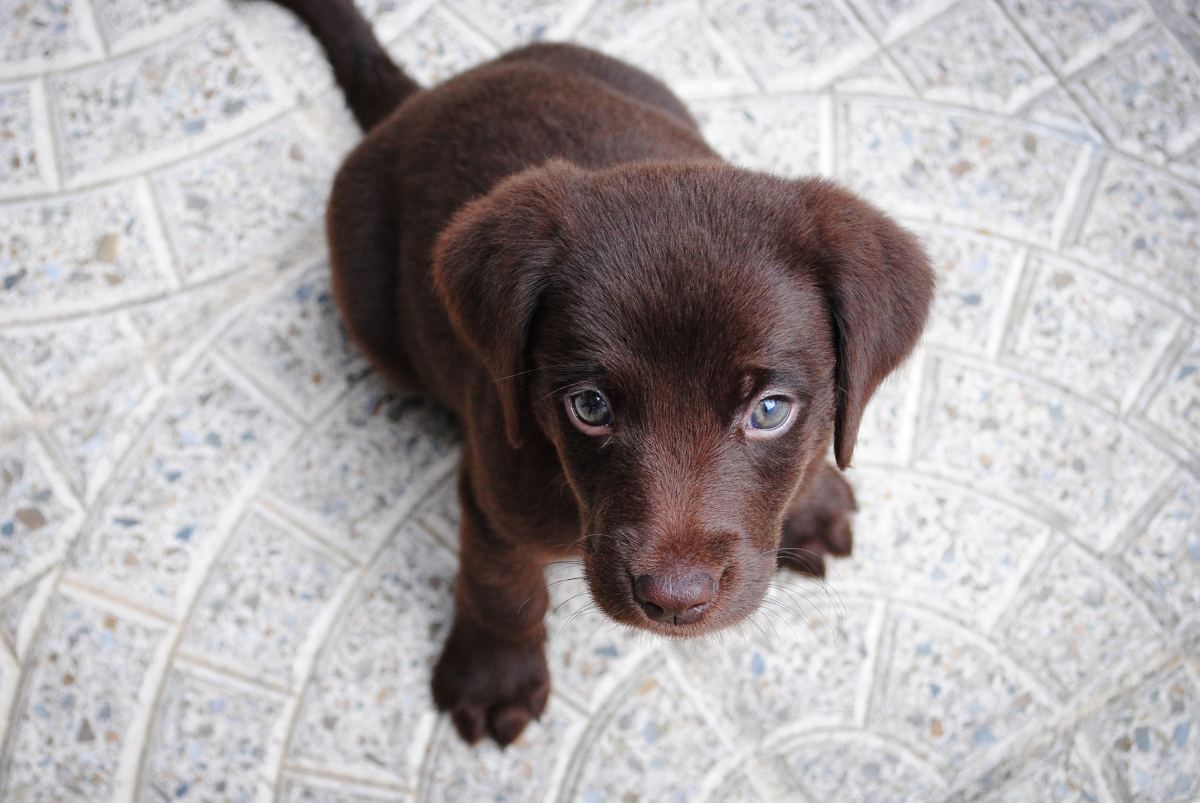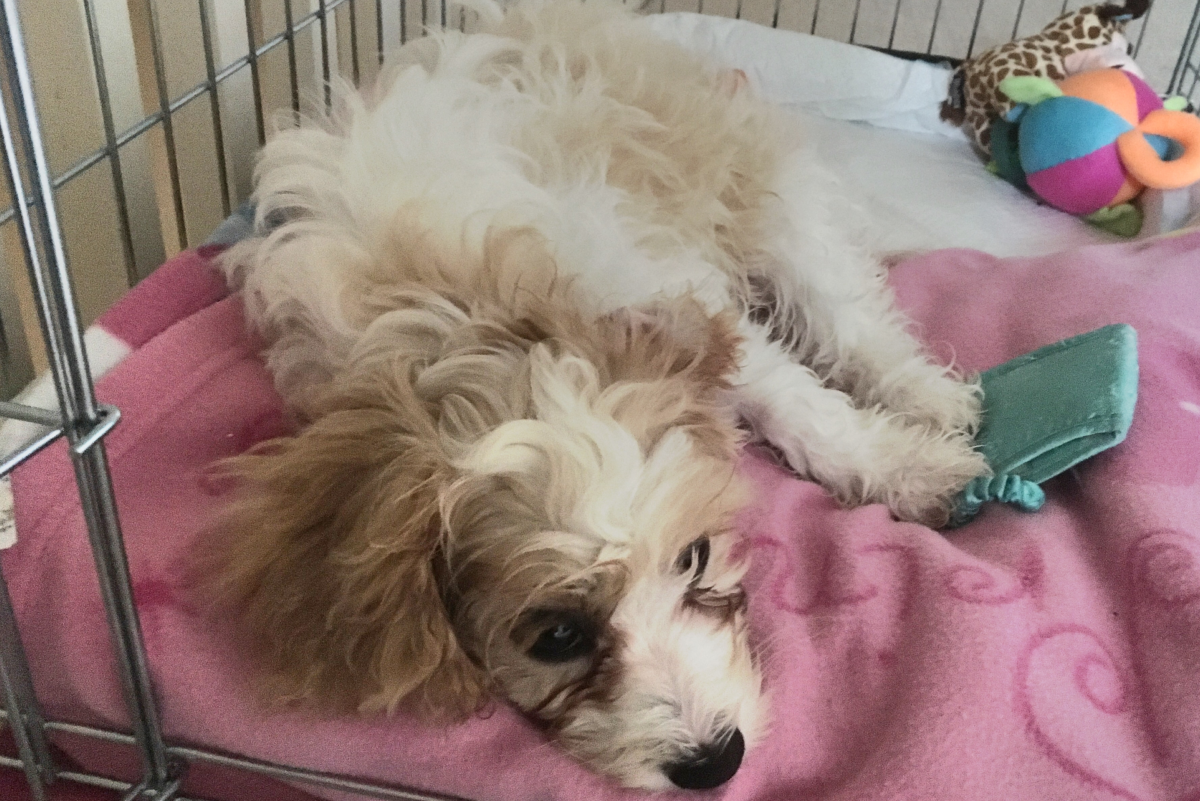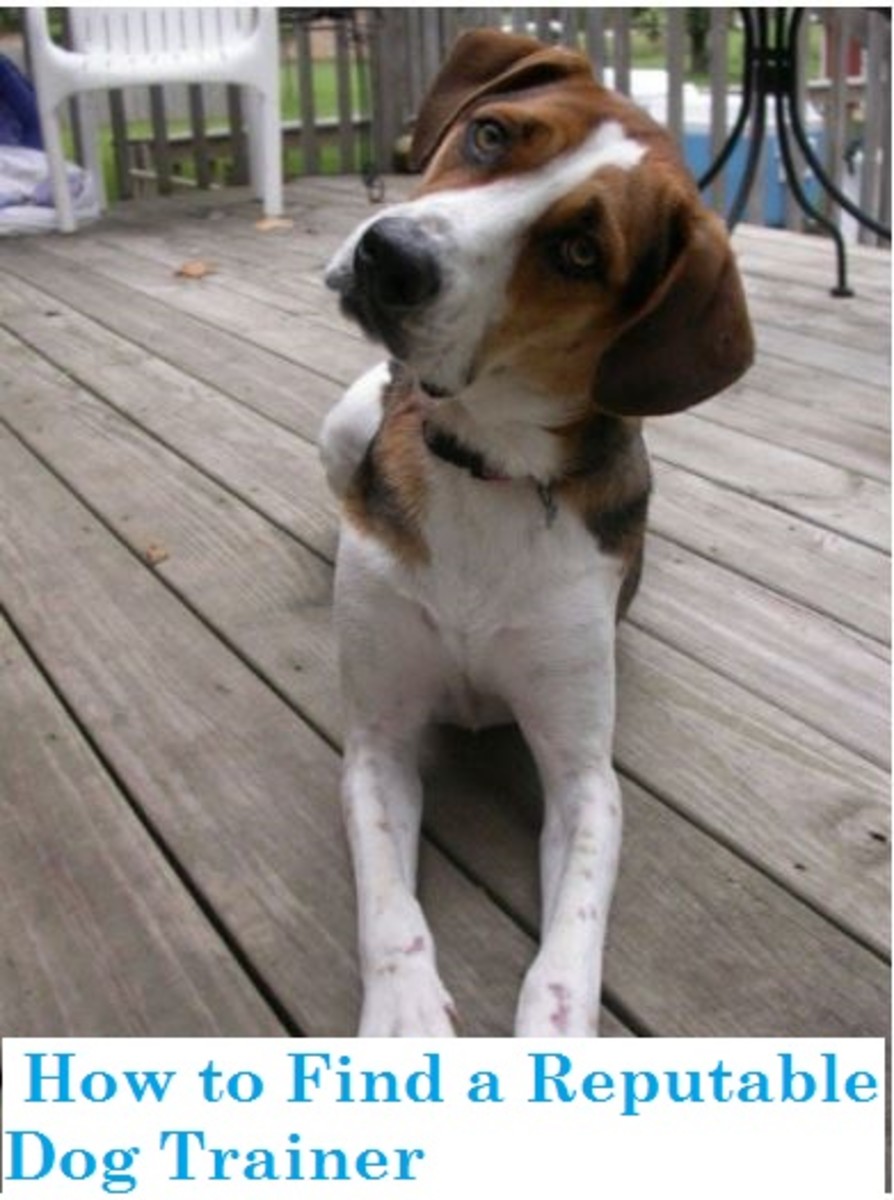- HubPages»
- Pets and Animals»
- Dogs & Dog Breeds»
- Dog Training
Loose Leash Walking: Your Dog's Freedom, Your Peace of Mind
My Experience
Making the decision to add a dog to your family is a hug commitment, especially if he/she is a puppy! Make no mistake that caring for a dog and proper training takes time, energy and most of all patience. I love dogs and have raised them for at least 20 years if you count my childhood of taking our family dog on walks, feeding her, cleaning up after her, and entertaining her. My wife and I adopted our first dog, an American Staffordshire Terrier mix, together a few years ago and completed several training courses with him which is how I learned this technique. The biggest challenge I have faced and I know other dog lovers have faced is being able to walk your dog in peace.
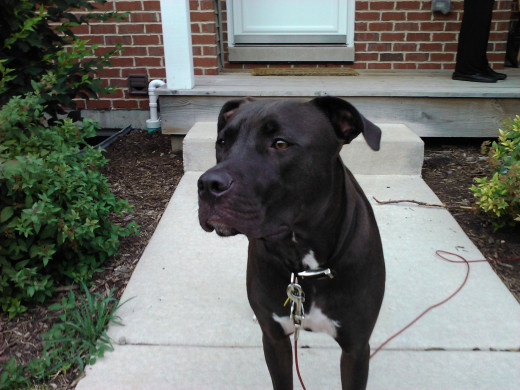
What I mean by that is having your dog walk next to you without pulling all over, barking or trying to chase every little thing that moves on the ground. If this has been your experience with dog walking, then fret no more because I am going to teach you the art of loose leash walking your dog. I say art because it is art. Both the dog and owner must be in constant communication for this training technique to work. It takes time to perfect this method and once the dog learns, it must be reinforced every time he/she goes on a walk with you.
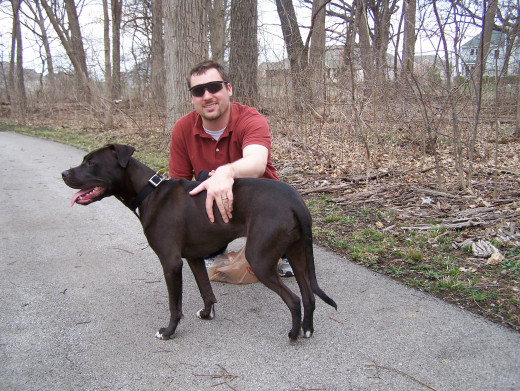
Loose Leash Walking Technique
Let’s get started with the technique. It’s pretty simple to learn but takes time to master. First of all you will need a few items before heading out the door with your pooch.
- A very long leash, probably at least 15 feet long. If need be, tie a few longer leashes together.
- Make sure to bring along some of your dog’s favorite treats- positive reinforcement.
- Bring along some water- this type of mental stimulation will tire him/her out the first time.
Now, find a large area to work with your dog, preferably free from too many distractions for the first time. This session is used to acquaint the dog with this brand new technique and less on working with him/her on avoiding distractions. Remember that these sessions should be high energy and fun. You want your dog to love going on walks and working with you and he/she will feed off the energy you give, so make it positive, light and fun!
Start off walking briskly with your dog on the long leash. If he/she has never been exposed to loose leash walking before, confusion and hyper activity may occur. Don’t panic, this is normal! Since you are walking fast and keeping slack in the leash make sure you’re communicating with your dog by calling his/her name and saying one command like “come”. You want him/her to walk/run in the direction you are walking, not the other way around but I can guarantee this won’t happen, at least not in this session.
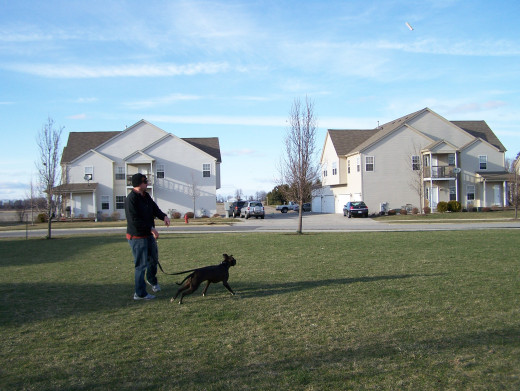
When your dog starts to walk in front of you allow him/her to use up the slack and as soon as you feel tension, lightly pull the leash so the dog feels it and follow up with the command, “uh uh, this way” and then change your direction. We use the command “uh uh” instead of “no” because humans use the word “no” very often and eventually it becomes white noise to dogs, much like it does with children. When your dog changes direction with you, give him/her a treat right away and keep moving. The treat reinforces the command and he/she will eventually learn that walking next to you is a treat!
Again your dog will run in front of you and pull the leash to its max at which time you will gently pull the leash and sternly, without emotion state the command and change directions. As soon as your dog changes directions give him/her a treat. You will notice that after about 10 minutes of this exercise your dog will either start to understand or he/she will still have difficulty. That’s ok because the point of this session is just to acquaint the dog to the new exercise. Also, pay attention to your dog’s body language. If he/she is getting overworked, hot or seems disengaged, stop the training session and give him/her lots of water and praise. Believe it or not 15 minutes of mental stimulation for a dog is equivalent to about an hour of physical exercise so don’t be shocked if he or she seems tired or a little “out of it”. If your dog doesn’t receive much exercise, then he/she may be in great shape to continue.
I would limit this session to about 10-15 minutes and immediately follow up with praise. You can repeat this exercise everyday or even multiple times per day. It should only take a few sessions for your dog to catch on to this exercise and within about a week of daily training your pooch should master loose leash walking.
When your dog has finally mastered this technique he/she will follow you and should either walk with you or behind you even if you decide to change directions with the command. As he/she gets used to this type of walk, move to an environment with distractions to practice. Your dog should be able to follow you as long as you continue to give him/her praise, stay relaxed and have fun. You can then move into normal walks with a regular leash and you will constantly be reinforcing what you’ve taught, but without the change of direction unless your dog refuses to listen or obey. To this day all I have to do is give a light tug on the leash when my dog starts walking in front of me and he either stops or slows down to wait for me. On days where he is especially hyper, I will use the change of direction to reinforce I am the leader but it has become rare.
Loose Leash Walking Tips
Quick Guide
|
|---|
Have fun!
|
Bring lots of treats and water
|
Use at least a 15' leash
|
Lots of communication is key
|
15 minutes max for 1st session
|
Be patient with your dog
|
Find an area with little distractions
|
To recap, make sure you the first session is light and fun and no longer than 15 minutes. Bring plenty of water, a 15’ leash and treats. Walk in one direction until tension is tightened on the leash and then change directions using the command. Give lots of praise when your pooch obeys. Practice this technique with longer durations and adding distractions as your dog becomes comfortable and familiar with the method. Eventually use a normal leash and enjoy your peaceful walks!
